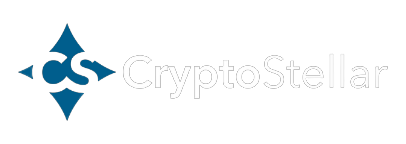AAVE, the governance token of the decentralized finance (DeFi) protocol Aave, skilled a 17% decline between July 30 and August 1, reaching the $62 degree.
Whereas the $62 help has demonstrated its resilience, the present worth of $64.40 continues to be 12% beneath the day by day shut on July 30. Traders are actually questioning whether or not this motion signifies a extra cautious strategy to the sector or if different components are exerting stress on the AAVE token worth.

A part of the current motion within the AAVE token may be attributed to the dangers of cascading liquidations on DeFi protocols, ensuing from the Curve Finance pool exploit that commenced on July 30. Nonetheless, Aave’s decentralized liquidity protocol has efficiently survived earlier equivalent eventualities and the protocol has a considerable $295.6 million deposited in its Security Module.
Notably, Michael Egorov, the founding father of Curve, at present holds a considerable $76.6 million mortgage backed by 357.3 million CRV tokens throughout three DeFi purposes, as reported by Delphi Digital. This represents 40.5% of the complete CRV circulating provide and poses dangers to the ecosystem, elevating considerations about potential liquidation repercussions on main protocols, together with Aave.
18/ Replace: Having paid down a few of his loans, Egorov has managed to considerably scale back his liquidation worth factors.
*Be aware on his Fraxlend place: Utlization has fallen to 37% so the APY ought to proceed to say no* pic.twitter.com/LUyeopWRMp
— Delphi Digital (@Delphi_Digital) August 1, 2023
In accordance with Delphi Digital knowledge, particularly on Aave, Egorov holds 267 million CRV tokens, backing a 54.2 million Tether (USDT) mortgage. With a 55% liquidation threshold, the present liquidation worth for the CRV token stands at $0.37, which seems comparatively safe for the time being. Nonetheless, it is important to notice that Egorov is paying a major 50% APY for this mortgage.
This case serves as proof that Aave and different high DeFi protocols perform as supposed, with out particular guidelines or bailouts, even for venture founders. Whereas the Curve token debacle continues, there isn’t any distinct subject with the Aave protocol, except for notable gamers taking assertive actions to shut their positions.
Aave stablecoin buying and selling beneath $1 is an ongoing concern
One other issue influencing AAVE’s token efficiency is the stablecoin GHO, which has been buying and selling beneath the $1 peg since its launch on July 16. In accordance with 21Shares’ on-chain knowledge and analysis analyst, Tom Wan, the stablecoin’s low fixed-rate borrowing presents a double-edged sword.
The dearth of DeFi integration and farming alternatives for GHO discourages debtors from holding the token, as they search increased yields in different stablecoins. Tom Wan emphasizes that this promoting stress results in the depegging of the GHO stablecoin on decentralized exchanges.
The Aave protocol at present boasts a considerable $5.1 billion in Complete Worth Locked (TVL) throughout six chains, but it surely has skilled a current 12.5% decline on this determine inside only one week. As compared, Uniswap’s and Compound’s TVL remained comparatively secure at $3.75 billion and $2.23 billion, respectively.

Nonetheless, it’s price noting that Aave’s annualized income is $12 million, as per DefiLlama knowledge, which falls considerably in need of Convex Finance’s $52 million and Radiant’s $20 million.

Regardless of this, some proponents argue that Aave’s increased charges in comparison with its rivals go away room for potential future income progress.
Latest occasions might need tamed traders’ views on Aave
In Might 2023, the older model of Aave protocol (v2) encountered a bug that hindered users from withdrawing $110 million price of belongings on the Polygon Community implementation. The difficulty arose as a consequence of an rate of interest curve patch on Might 16, but it surely was promptly resolved inside every week, and no funds had been reported misplaced on this incidence.
One other current contentious occasion on Aave passed off on June 12 when a proposal was introduced to prevent a specific account, belonging to Curve founder Michael Egorov, from accumulating additional debt. This transfer sparked debates amongst individuals, with some contending that it infringed upon the precept of censorship-resistance or “neutrality” in DeFi.
Regardless of the current 17% decline within the AAVE token worth and a 12.5% drop in TVL, Aave’s decentralized utility stays a robust contender within the DeFi house. With a strong insurance coverage fund and protocol charges, the protocol is well-equipped to climate market fluctuations and potential dangers.
Though Aave’s annualized income could also be decrease in comparison with some rivals, the upper charges may doubtlessly pave the best way for future income progress. Total, Aave’s stable basis and important TVL sign its resilience and potential for continued success.
This text is for common info functions and isn’t supposed to be and shouldn’t be taken as authorized or funding recommendation. The views, ideas, and opinions expressed listed below are the creator’s alone and don’t essentially mirror or characterize the views and opinions of Cointelegraph.Share this post with your friends
Get Started
About

